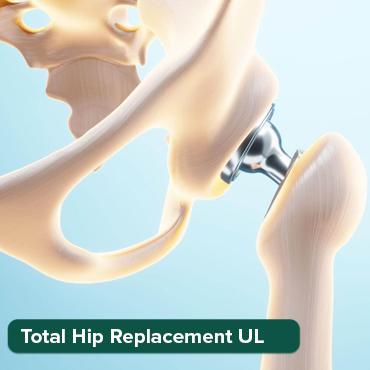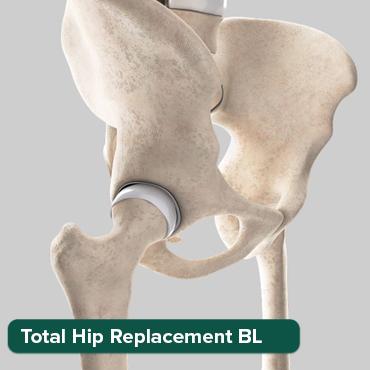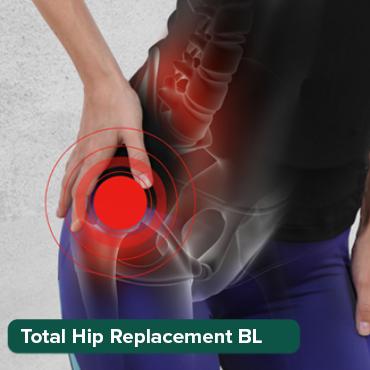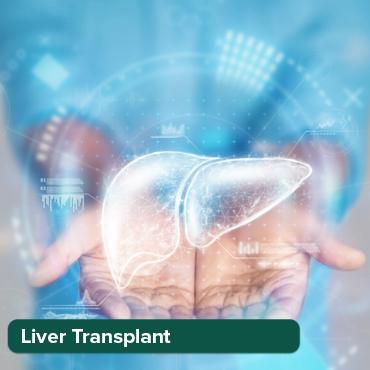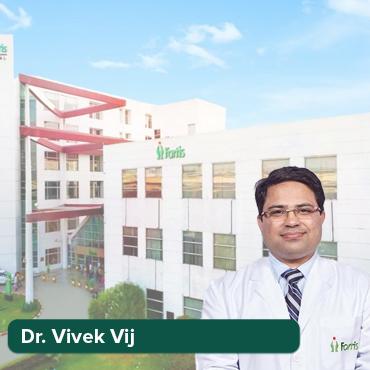
Spinal Decompression Surgery: Types, Procedures, Risks, and More
28 Sep, 2023
 Healthtrip Team
Healthtrip TeamWe're going to dig into the intriguing world of spinal decompression surgery. Before we begin, let's structure our lesson by first understanding the essentials.
To kick things off, what exactly is spinal decompression surgery?Spinal decompression surgery is a medical procedure that aims to relieve pressure on the spinal cord or nerve roots by removing or adjusting structures like discs or bone spurs in the spine. It can treat conditions like herniated discs and spinal stenosis to alleviate pain and improve mobility.
Most popular procedures in India
Now, why should we care about spinal decompression surgery? It's crucial because it can dramatically improve a patient's quality of life, alleviating debilitating pain and other symptoms..
As we journey through this lesson, keep in mind the key points we're going to cover. These include the indications and purpose of the surgery, the types of procedures involved, preparation, risks, and long-term outlook.
Wellness Treatments
Give yourself the time to relax
Lowest Prices Guaranteed!

Lowest Prices Guaranteed!
Types of Spinal Decompression Surgery
A. Laminectomy
A laminectomy, also known as decompressive laminectomy, involves the removal of the lamina, which is the back part of the vertebra, to create more space within the spinal canal. This extra space helps relieve pressure on the spinal cord or nerves. Laminectomies are often performed to treat spinal stenosis or when there's a need to access the spinal cord for other surgical procedures.
B. Discectomy
Next up, we have the discectomy. In this procedure, the surgeon removes a portion or the entire intervertebral disc. This is typically done when a disc has herniated or ruptured, causing compression on spinal nerves. By taking out the problematic disc material, the pressure is relieved, reducing pain and other associated symptoms.
C. Foraminotomy
Now, let's talk about foraminotomy. This surgical technique involves the enlargement of the neural foramen, which are the openings through which spinal nerves exit the spinal column. By making these foramina larger, the surgeon can alleviate nerve compression, which is often seen in conditions like foraminal stenosis.
D. Osteophyte Removal
Osteophytes, also known as bone spurs, are abnormal bony growths that can develop on the vertebrae. When these bone spurs impinge on nearby spinal structures, they can cause significant discomfort. Osteophyte removal involves precisely removing or trimming these bony protrusions to restore the spinal canal's normal dimensions and relieve nerve compression.
E. Artificial Disc Replacement
Last but not least, we have artificial disc replacement. In this innovative procedure, a damaged or problematic intervertebral disc is replaced with an artificial one. This allows for the preservation of motion and flexibility in the affected spinal segment while still addressing issues like disc herniation. It's a valuable alternative to fusion surgeries in select cases.
Each of these techniques has its own set of indications and considerations. The choice of procedure depends on the patient's specific condition, the location of the issue, and the surgeon's judgment. It's important for healthcare providers to carefully evaluate and select the most suitable method to achieve the best possible outcomes for the patient.
Why Spinal Decompression Surgery is Done ?
Spinal decompression surgery is carried out for several important reasons:
- Nerve Compression: One of the primary reasons is to alleviate pressure on nerves within the spinal column. Conditions such as herniated discs, spinal stenosis, or bone spurs can compress nearby nerves, leading to pain, numbness, weakness, and other neurological symptoms. Surgery can help relieve this compression.
- Pain Management: When conservative treatments like physical therapy, medication, and lifestyle changes fail to provide relief, surgery may become necessary. It's often seen as a last resort for individuals suffering from severe, debilitating pain.
- Improved Quality of Life: Chronic pain or neurological deficits can significantly impact a person's daily life, making even simple tasks challenging. By addressing the underlying cause through surgery, patients can experience a substantial improvement in their quality of life.
- Preventing Progression: In some cases, spinal conditions can worsen over time. Surgery can halt or slow down the progression of the condition, preventing further damage to the spine and nerves.
Who Needs Spinal Decompression Surgery ?
Now, let's discuss who might be candidates for spinal decompression surgery:
- Severe Back or Neck Pain: Individuals who experience intense, persistent pain in their back or neck that doesn't respond to conservative treatments may be candidates.
- Nerve Compression Symptoms: Patients with symptoms like radiating pain, numbness, tingling, or muscle weakness, particularly in the arms or legs, may benefit from surgery.
- Herniated Discs: Those with herniated or bulging discs that are pressing on spinal nerves may require surgery if symptoms are severe.
- Spinal Stenosis: This condition involves the narrowing of the spinal canal, which can put pressure on the spinal cord or nerves. Surgery may be necessary for individuals with severe stenosis and associated symptoms.
- Traumatic Injuries: People who have suffered traumatic spinal injuries, such as fractures or dislocations, might require decompression surgery to stabilize the spine and prevent further damage.
- Failed Conservative Treatments: Patients who have exhausted non-surgical options without significant improvement in their condition may be considered for surgery.
It's important to note that the decision to undergo spinal decompression surgery is highly individualized and should be made in consultation with a qualified spine specialist. The risks, benefits, and expected outcomes of the procedure should be thoroughly discussed before making a choice.
Tips for preparing for spinal decompression surgery
Here are the tips for preparing for spinal decompression surgery
1. Consult with a Spine Specialist:
- Schedule a consultation with a qualified spine specialist or orthopedic surgeon.
- Discuss your medical history, current symptoms, and treatment options.
- Ask questions and seek clarification regarding the surgical procedure and its risks.
2. Diagnostic Tests and Imaging:
- Undergo diagnostic tests like X-rays, MRI scans, or CT scans to precisely identify the spinal issue.
- These tests help your surgeon plan the surgery and determine its exact location and extent.
3. Medication Adjustments:
- Review your current medications with your healthcare provider.
- Discuss any necessary adjustments or temporary discontinuation of specific medications, such as blood thinners, in preparation for surgery.
4. Lifestyle Changes:
- Follow any lifestyle recommendations provided by your healthcare team.
- Maintain a healthy diet to support your body's healing process.
- Engage in gentle exercises or physical therapy as prescribed to improve your physical condition before surgery.
- Make necessary arrangements for post-operative recovery, including assistance at home and transportation.
Spinal Decompression Surgery Procedure
Before Surgery:
- Pre-operative Evaluation: Before the surgery, you'll typically undergo a comprehensive pre-operative evaluation, including a physical examination, review of your medical history, and discussion of any allergies or previous surgeries.
- Anesthesia Selection: An anesthesiologist will discuss anesthesia options with you. Spinal decompression surgery is usually performed under general anesthesia, which means you'll be completely unconscious during the procedure.
- Positioning: You'll be positioned on the operating table in a way that provides the surgeon with optimal access to the surgical site. The surgical team will ensure you're comfortable and properly secured.
During Surgery:
- Incision: The surgeon will make a small incision over the affected area of the spine. The size and location of the incision depend on the specific procedure being performed.
- Nerve Root or Spinal Cord Decompression: The surgeon will carefully access the spinal canal, and depending on the type of surgery, they may remove a portion of the lamina (laminectomy), excise a herniated disc (discectomy), or perform other necessary procedures to decompress the spinal cord or nerves.
- Stabilization (if necessary): In some cases, such as spinal fusion surgery, the surgeon may stabilize the spine using hardware like screws and rods to maintain proper alignment and support the affected area.
After Surgery:
- Monitoring in Recovery Room: After the surgery, you'll be transferred to the recovery room, where healthcare professionals will closely monitor your vital signs and ensure your initial recovery is progressing well.
- Pain Management: You'll receive pain management medications as needed to keep you comfortable during the initial recovery phase.
- Hospital Stay: Depending on the complexity of the surgery and your overall health, your hospital stay may range from a few hours to a few days. During this time, you'll receive care, including physical therapy if necessary.
- Rehabilitation and Follow-up Care: After discharge, you'll likely require a period of rehabilitation and physical therapy to regain strength, mobility, and function. Follow-up appointments with your surgeon will be scheduled to monitor your progress.
Additional tips for Post-Surgery aftercare
- Manage pain with prescribed medication.
- Gradually resume light activities.
- Attend physical therapy sessions.
- Keep the incision clean and dry.
- Follow all surgeon's instructions for a successful recovery.
Duration of the Procedure:
The duration of a spinal decompression surgery can vary widely depending on the specific procedure, the complexity of the case, and the surgeon's experience. On average, these surgeries can last anywhere from 1 to 3 hours. However, more extensive surgeries or those involving multiple levels of the spine may take longer.
It's important to note that while the surgical procedure itself may be relatively short, the overall recovery and rehabilitation process can extend for several weeks to months, depending on the individual patient and the type of surgery performed.
Remember that the details of the surgery and the post-operative care plan will be discussed thoroughly with your healthcare team before the procedure to ensure you're well-informed and prepared for what to expect.
Latest Advancements in Spinal Decompression Surgery
A. Minimally Invasive Techniques: These procedures involve smaller incisions, reduced muscle disruption, and faster recovery times compared to traditional open surgery. Minimally invasive techniques use specialized instruments and imaging guidance to target specific areas of the spine, minimizing damage to surrounding tissues.
B. Robotics and Navigation: Robotic-assisted surgery and advanced navigation systems have improved the precision and accuracy of spinal procedures. Surgeons can use robotic tools to enhance their dexterity and perform complex surgeries with greater control, leading to improved outcomes and reduced complications.
C. Biomechanical Research: Ongoing research into spinal biomechanics has led to a better understanding of how the spine functions and responds to various treatments. This knowledge informs surgical techniques and helps optimize patient outcomes by tailoring procedures to individual biomechanical characteristics.
D. Novel Materials and Implants: Advances in materials science have led to the development of innovative spinal implants. These implants are designed to provide better stability, promote fusion, and reduce wear and tear on the spine. They are often used in conjunction with surgical procedures to enhance long-term results.
These advancements collectively contribute to safer, more effective, and less invasive spinal decompression surgeries, ultimately benefiting patients by reducing pain, improving mobility, and speeding up recovery.
How can we help with the treatment?
If you're on the lookout for treatment in India, let Healthtrip be your compass. We will serve as your guide throughout your medical treatment. We'll be by your side, in person, even before your medical journey commences. The following will be provided to you:
- Connect with renowned doctors from a network spanning 35+ countries and access the world's largest health travel platform.
- Collaboration with 335+ top hospitals , including Fortis and Medanta.
- Comprehensive treatments from Neuro to Cardiac to Transplants, Aesthetics, and Wellness.
- Post-treatment care and assistance.
- Teleconsultations at $1/minute with leading surgeons.
- Trusted by 44,000+ patients for appointments, travel, visa, and forex assistance.
- Access top treatments and packages, such as Angiograms and many more.
- Gain insights from genuine patient experiences and testimonials.
- Stay updated with our medical blog.
- 24/7 unwavering support, from hospital formalities to travel arrangements or emergencies.
- Pre-scheduled specialist appointments.
- Prompt emergency assistance, ensuring safety.
Our Patient success stories
Watch Countless Inspiring Success Stories: Healthtrip's Myriad Patient Testimonials
Risks and Complications
A. Surgical Risks
- Anesthesia-related complications
- Excessive bleeding during surgery
- Allergic reactions to surgical materials
B. Infection
- Surgical site infection
- Systemic infections (less common but serious)
- Preoperative antibiotic prophylaxis is typically used to minimize infection risk.
C. Nerve or Spinal Cord Damage
- Inadvertent injury to nerves or the spinal cord during surgery
- Monitoring techniques and intraoperative imaging help prevent such injuries.
D. Blood Clots
- Deep vein thrombosis (DVT) or pulmonary embolism (PE)
- Early mobilization and blood-thinning medications may be used to prevent clot formation.
E. Failed Back Surgery Syndrome
- Persistence or recurrence of pain after surgery
- Proper patient selection, accurate diagnosis, and appropriate surgical techniques can reduce this risk.
Strategies to Prevent Complications
- Thorough patient assessment and selection
- Surgical planning using advanced imaging techniques
- Minimally invasive approaches when suitable
- Careful monitoring during surgery
- Prophylactic antibiotics to prevent infections
- Post-operative physical therapy and rehabilitation
- Patient education on post-operative care and signs of complications
It's important to note that while these risks exist, spinal decompression surgery is generally safe and effective when performed by skilled surgeons and with appropriate patient selection and preparation. Patient communication and collaboration with the healthcare team play a significant role in minimizing these risks and ensuring a successful outcome.
Outlook and Long-Term Effects
- Reduced pain and improved quality of life
- Restoration of normal activities and function
- Emphasis on maintaining a healthy lifestyle
- Adherence to any post-surgery restrictions
- Regular follow-up appointments with the healthcare team
- Monitoring of progress and addressing any issues promptly
Related Blogs

Why Second Opinions Matter Before Spine Surgery Doctors Explain
Deep medical insights, treatment comparisons, safety standards, and technological updates

International Patients' Guide to Understanding Spine Surgery Terminology
Deep medical insights, treatment comparisons, safety standards, and technological updates

How Healthtrip Ensures Patient Safety During Spine Surgery Procedures
Deep medical insights, treatment comparisons, safety standards, and technological updates

Choosing Between Treatment Options for Spine Surgery
Deep medical insights, treatment comparisons, safety standards, and technological updates

How to Read Your Medical Reports Before Spine Surgery
Deep medical insights, treatment comparisons, safety standards, and technological updates

Breakthrough Medical Technologies Transforming Spine Surgery in India
Deep medical insights, treatment comparisons, safety standards, and technological updates
